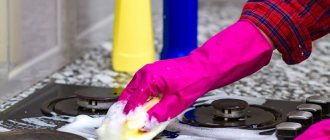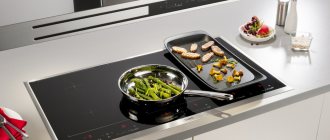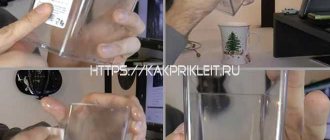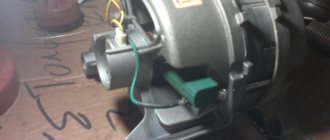The cost of carrying out work by specialists
Malfunctions occur suddenly and require quick fixes, especially when a gas stove breaks down. However, not all home appliance owners have the necessary skills. When it is impossible to carry out repairs yourself, you have to call a specialist to your home. What expenses await the owner:
- replacement or repair of a gas supply valve - from 300 to 1,200 rubles;
- nozzle cleaning - from 400 rubles;
- replacing the oven lamp - from 400 rubles;
- gas adjustment - from 500 to 900 rubles;
- lubrication and cleaning of rods on the feed lever - 900 rubles;
- replacement of rods - 1200 rubles;
- thermocouple replacement - 900 rubles;
- replacement of the ignition unit - 900 rubles;
- cleaning of supply contacts - from 900 to 1,100 rubles;
- change of sealing gum - from 500 rubles;
- replacement or repair of a spark plug - 800 rubles.
Prices depend on the stove model and the region where household appliances are serviced and repaired.
Instructions for removing the handle
Since most modern cookers have removable power controls, they can be easily removed for cleaning. But, if this has not been done before, then rough oiling can create certain difficulties. Despite this, the cleaning operation is still worth carrying out.
It is important not to forget that the stove is a gas-using equipment, during the operation and maintenance of which it is important to comply with fire safety rules. Therefore, before starting to work with the stove, it is necessary to turn off the gas supply, since any manipulations are considered flammable
Stage #1 - selection of necessary tools
To carry out the work you need to prepare the following:
- gloves;
- gas key;
- pliers;
- screwdriver;
- knife;
- rags;
- water and detergent.
According to safety requirements, work must be carried out with rubber gloves.
Some models of gas stoves have special mounts for handles. You need to remove them carefully so as not to damage the thread and then return them to their place.
A gas wrench, pliers and a screwdriver will be needed to remove the gas stove handle, while a toothbrush and detergent will be needed to clear clogged areas. It is worth remembering that different models of gas stoves have different methods for removing handles.
Stage #2 - dismantling the gas stove handle
You should start working after the gas supply valve is closed.
The gas stove knobs should be set to the “Off” position. In order to remove one handle, you need to pull it towards you and slowly pull it out of the groove. This operation must be carried out very carefully so as not to damage the rotating mechanism.
If you cannot remove the handle manually, you can use pliers
Using the rag as a spacer between the handle and the working surface with part of the pliers, gently squeezing and pulling towards you. In some types of plates, the handles are screwed on with screws; you need to use a screwdriver to unscrew them.
There are also options when you can remove the handle by lifting the mounting protective cap. When using a screwdriver or knife to pry up the handle, you should act extremely carefully so as not to damage the surface of the stove
In some types of stoves, the handles are screwed on with screws; you need to use a screwdriver to unscrew them. There are also options when you can remove the handle by lifting the mounting protective cap. When using a screwdriver or knife to pry up the handle, you should act extremely carefully so as not to damage the surface of the stove.
There are models where the protective ring has grooves, and in order to get it out, you just need to twist the ring a little to the side.
Stage #3 - cleaning removable elements
To clean dismantled handles, you need to prepare a container with warm water and detergent in which to place all removable mechanisms that need cleaning. Keep it in the washing solution for at least 10 minutes, and in case of severe contamination, change the water additionally.
To clean the surface of the handles, do not use substances containing chlorine, as this can damage the enamel coating and erase the inscriptions on the handle.
Using a brush, carefully remove dirt from the areas of the stove where the handles were installed.
Pay special attention to notches, gaps and reliefs
It is worth noting that when processing aluminum parts of the handles, it is better to use a rag moistened with vegetable oil, and then remove any remaining oil with a detergent containing alcohol
Also, when cleaning the surface of the stove and hard-to-reach places under the handles, do not forget about the grate. It also requires timely maintenance.
To effectively clean grates made of various materials, various methods and available means are used.
Stage #4 - reinstalling the handles
The handles are installed after all parts have completely dried. It is necessary to correctly put all the rotating mechanisms in their original places. If the handle shaft is not fully seated in the groove, it will not work.
The handles of gas stoves come in plastic and metal. They are equally heat resistant, however, when removing and installing a plastic handle, the likelihood of damage is much higher
Methods for cleaning pens depending on the type
If the regulators are easily removed, they can be soaked or boiled in a solution to remove grease, and then easily clean off the residue with a brush.
If the handles on your stove are not removable, do not be upset, and for this case there will be a way; in this situation, sticks with cotton wool, again a toothbrush, which is no longer suitable for brushing teeth, gauze swabs and toothpicks are quite suitable for helping us.
Cleaning of fixed handles is carried out in the following sequence:
- take a product that contains chlorine;
- moisten a gauze swab in it and apply it to the hands (or spray it with a spray bottle);
- wait a few minutes;
- Next, we take a brush and clean it, in hard-to-reach places we go through with a cotton swab and a toothpick;
- Afterwards, use a sponge or cloth to wipe away any remaining dirt.
Preparing to wash the stove
In fact, there is no difference whether it is a gas stove, induction or electric. There are handles on almost any cooking equipment. Although modern models are increasingly equipped with electronics and push-button controls. But let's focus on the handles. They can be removable or stationary. For most household stoves they are removable.
Before you begin cleaning, you must remove all rotary toggle switches. This will make the process much easier. It’s okay if you can’t remove the switches, you can restore them to their original form and in place.
Regardless of the method chosen, you may need: a foam sponge, an old toothbrush, a pair of napkins that absorb moisture well, and gloves. It is highly not recommended to use metal brushes for cleaning gas and other stoves. But what can be truly useful is a melamine sponge.
Removable option: how to wash the handles of a kitchen stove
To begin with, you will need to determine what type of regulators are installed on your stove very simply, it is very easy to pull them towards you and if they are removed, then the regulators are of a removable type, but if you rest and pull it towards you, with all your might and it remains in place, then, unfortunately, the regulator is not removable.
In this case, do not try to remove it by force, as it may break.
For example, it is not always possible to quickly clean the toggle switches on a kitchen electric stove using traditional methods. But anise drops or ammonia - the water method will come in very handy here, be prepared that cleaning from fat takes longer than planned. But it’s easy to clean dirt on the removable stove regulator. If the regulator is removable, then the cleaning procedure should be as follows: remove all the handles, prepare a container with hot water, almost boiling water, then dissolve the grated plain soap, powder, dishwashing detergent in this water and place all the removed regulators in this solution for approximately 15 minutes, after which we take an old toothbrush and clean the entire toggle switch inside and out as thoroughly as possible. Upon completion, we receive the purest regulators.
Do-it-yourself gas stove cleaning
Not all housewives and owners of gas stoves know how to properly clean the stove with their own hands, as well as what is required for this. Folk remedies are suitable for those housewives who prefer not to buy household chemicals, but to use safe methods that have been proven over the years.
And besides, you can use household chemicals only with gloves, so as not to damage the skin of your hands.
To avoid damaging the skin of your hands, it is best to clean the stove while wearing gloves.
If you still prefer synthetic products, then it would not hurt to learn about alternatives and safe methods. The washing and cleaning mixture can be made at home from available products that are found in any home. As a rule, such mixtures wash away dirt no worse than all popular household chemicals, and at the same time they are also safe.
To clean a gas stove and oven you can use:
- Citric acid;
- Vinegar;
- Ammonia;
- Soap dissolved in hot water;
- Baking soda.
Using these components, you can clean not only the stove, but also other kitchen appliances, such as a microwave oven, electric kettle, multicooker, juicer and other household appliances.
How to clean pens
To clean the regulators from grease and dirt, you can use various household chemicals. However, most housewives prefer to do this work with the help of effective improvised means. The easiest way to clean handles is with soapy water. To do this you need to do the following:
- Pour water brought to a boil into a deep container.
- Finely grated laundry soap is dissolved in it. For every liter of liquid you need to take 2 tbsp. l. cleaning agent.
- The previously removed handles are placed in the prepared solution and left for 6-8 hours.
- After the specified time, the dirt will become wet and can be easily removed with a sponge.
- Clean regulators are wiped with a dry cloth and returned to their place of work.
- 1 bottle of ammonia is poured into a bowl.
- The same amount of water (necessarily at room temperature) is added to it.
- The components of the cleaning product are mixed.
- A cotton pad is soaked in it.
- They are used to wipe the regulators removed from the gas appliance.
- After 7 minutes, clean the products with an old toothbrush.
- The parts washed from dirt are wiped dry and installed in their original place.
How to clean kitchen stove handles?
Cleaning the handles of a kitchen stove at home does not present any problem; you need to consider a couple of options.
Soap based solution
A wonderful remedy for old fat and dried food particles. It is made from dishwashing detergent and plain soap shavings:
Important! If you have little time and a lot of work, speed up the process. Just boil the solution with the parts, no more than 5 minutes. Then let it sit for 20 minutes, and you can wash and dry without fear.
Ammonia solution
An inexpensive all-purpose cleaner that will help you clean stains and dirt without much effort. Ammonia is a convenient way to clean non-removable stove regulators. And it is done like this:
Important! Since breathing ammonia is unsafe, wear a mask and gloves when working. An open window is an important requirement while working with this product and for 30 minutes after you finish cleaning.
If the toggle switches are removed, then put them in a similar solution for 5 minutes, then follow a similar pattern as above. Clean with a toothbrush, rinse and wipe dry.
Vinegar or vinegar essence
An excellent option for removable parts, if you need to clean the handles of the stove from old grease:
- Place the regulators in a saucepan with water.
- Fill the handles with vinegar, 6 tablespoons per 1 liter of water (or 2 tablespoons of essence).
- Cover the pan with a lid and set the heat to medium for 5-7 minutes.
- Drain and let cool.
- Next, clean with a sponge or brush.
- Rinse and dry.
Lemon and soda
Very small stains can be cleaned with half a lemon and a minimal amount of lemon. And the most important thing is that it does not injure the surface. Also, baking soda and lemon will remove bad odors and dried food particles from toggle switches:
Important! Clean small cracks with a toothpick with a cotton swab on the end, which must be dipped in ammonia in advance.
Detection of failure in models
Like all similar household appliances, a gas stove becomes unusable over time, parts wear out, and repairs become necessary. Each manufacturer's furnaces have their own list of common faults. Most often this concerns problems with burners, electric ignition, and oven doors.
Hansa
Common problems with Hans gas stoves:
- The burners go out immediately after the switch is released. The reason is the adhesion of grease or food residues to the nozzles, a burnt-out thermocouple, damage to the magnetic valve, or faulty electric ignition.
- Unstable fire on the divider. The reason is a clogged nozzle or a misalignment of the air damper, which limits the air supply to the burner.
- No spark in electric ignition. Indicates a faulty fuel control system or worn spark plug.
- The oven door does not close well. The reason is a displacement of the fastening axis or mechanical damage to the door.
- The gas valve is stuck. Most likely, the valve body is damaged, the oil has thickened or dried out, or the locking handle has slipped off the axle rods.
- The smell of butane near the switched off stove. You need to check the connection of the gas pipe to the stove, the pipe itself for any gaps, and inspect the tap.
Darina
Typical malfunctions of Darin gas stoves include:
- random activation of the automatic burner ignition system;
- constant flame during operation;
- turning or sticking of the adjustment knob;
- malfunction of the solenoid valve that turns off the gas supply when the fire goes out;
- When the stove is turned on, there is a smell of fuel, smoke appears, and the flame is orange.
The most common breakdowns typical of Ardo slabs:
Periodic shutdown of the gas burner or lack of ignition. Most likely, the reason is a violation of the spark plug insulation, failure of the thermocouple, solenoid valve, or due to food residues in the injector.
Self-extinguishing burner. The reason is a burnt thermocouple or the need to clean the nozzle or adjust the gas supply.
Difficulty adjusting handles. Usually the problem is solved by washing and cleaning the rotating mechanisms.
Problems with electric ignition
Pay attention to the contacts of the power buttons; they may need to be cleaned. Inspect the unit responsible for supplying the spark, check the voltage in the network.
Insufficient combustion
The problem is caused by the need to clean the nozzle.
The smell of gas appears. To determine the cause, they urgently call a technician and ventilate the room, after first shutting off the gas supply pipe.
Ariston
The most common breakdowns in Ariston gas stoves:
- The gas does not ignite. Breakdown of the gas supply valve or electric ignition.
- Electronics malfunctions.
- Uneven burner flame. Indicates that the gas supply is incorrectly configured.
- The burner does not light. Most likely the solenoid valve is not working.
Malfunctions in the operation of the ignition module or igniter are less common; over time, the capillary tube or thermostat becomes damaged, and the burner channels become clogged.
Hephaestus
Common breakdowns of Gefest gas stoves:
- Uneven flame. Eliminated by adjusting the supply of flammable substances.
- Automatic extinguishing of the burner after ignition. The reason is a failed thermocouple.
- No flame. The reason is a malfunction of the Hephaestus model with electric ignition or gas supply tap.
- Malfunction of the electronic module (display, light bulbs, temperature sensors).
Indesit
The following faults are often encountered in Indesit gas stoves:
- An unpleasant odor appears after turning on the burners. It is necessary to clean the burners from food residues.
- The power controls are difficult to turn. The reason is the accumulation of dirt on the mechanism or the decorative handle needs to be replaced due to a faulty faucet fastening.
- Increased combustion. For bottled gas, adjustment of the reducer is required; for a centralized gas line, the reason is a problem with the nozzle.
- Low combustion intensity. It is worth checking the pressure in the system, the condition of the hose, and the nozzle.
- The burner does not light. If there is only one, most likely the divider and nozzle need to be cleaned. If all the burners do not light up, the problem is with the electric ignition.
- The burner smokes during operation. Indicates high pressure in the system, dirty nozzles, deformation of the flame diffuser, low gas quality.
- The oven light does not come on. Most likely, the light bulb has burned out or the contacts have oxidized; also check the serviceability of the socket and network cable.
- Smell of gas when the stove is turned off. It is possible that the device is connected incorrectly to the main line or one of the elements or connections of the structure may be depressurized.
Housewife's advice: how to clean stove handles (video)
We tried to talk about the most famous methods for cleaning handles on gas stoves. Of course, complex cleaning will not be necessary if you spend a few minutes on your hands after each cooking process, but situations are different and perhaps our advice is exactly what you will need in the near future. Be patient, use detergents, and start sprucing up your pet.
kitchenremont.ru
All gas stoves are equipped with removable handles.
The main thing here is not to rush, but to act carefully, without rushing and without breaking the plastic.
Stoves from different manufacturers certainly differ from each other. However, as experience shows, most design solutions from different manufacturers are VERY, VERY similar.
Before starting work, turn off the gas supply using the shut-off valve.
Gas stove Hephaestus, Indesit, Electrolux, Darina (knobs that need to be pressed and turned when igniting).
Just pull it towards you, along with the ring on which the symbols are drawn.
If you have any difficulties, try treating it with WD-40. Then, inserting one knife into the gap between the ring and the handle itself, bend it a little. And on the opposite side, use a second knife, acting as a lever.
If it doesn’t go through the cloth, use pliers carefully.
Then soak the hands in water with the addition of fairy. After a while, the fat will turn white and be wiped off with a toothbrush.
How to lubricate the tight rotating mechanisms of the crane?
Factory lubrication of the faucet is designed to last approximately five years. In Soviet times, gas workers used graphite lubricant (called NK-50), LG-Gaz41, LS-1P.
Graphite (crushed carbon), which forms the basis of the lubricant, is able to fill microscopic irregularities in parts, while reducing friction.
It has great refractoriness and does not dry out for a long time.
You can use solid oil or technical petroleum jelly.
Tips for repairing gas stoves with your own hands
usluga-spb.ru
How to remove handles from kitchen stoves of various models
The working principle of this technique is actually similar. Slabs from leading manufacturers such as:
Each device is equipped with gas supply power regulators. On some models it is quite easy to remove them. It is enough to use only the tip of a knife and pry off the component. Other slab models require disassembling virtually half the surface of the structure and the availability of tools such as:
- pliers;
- multi-format screwdrivers;
- kitchen knife.
Removing handles on devices such as Hephaestus, Darina, Hansa does not require the intervention of professional craftsmen or contacting warranty centers. They are simply removed, you can clean them without much effort and even replace them with new ones yourself. There are gas and electric stoves on which the regulators are welded to the internal parts. Such products are called stationary, on which it is impossible to remove the handles in everyday conditions. In such a case, you should contact specialists.
How to remove handles from a kitchen stove Hephaestus
Many housewives do not know how to properly remove all the handles from the Hephaestus kitchen stove in order to wash its surface. The Hephaestus device has more than ten types of handles that are responsible for activation:
- key surface burners;
- ovens;
- mechanical timer.
To light the burner, the valve on Hephaestus must be pressed down and turned. As practice says, it is very easy to remove such regulators. However, it is worth remembering the safety rules:
How to remove handles from Darina's kitchen stove
The regulators of the Darin model are similar to those of Hephaestus, in which the ignition of the burners requires pressure. Instructions for dismantling parts of this brand look like this:
- First of all, turn off the gas.
- Next, disconnect the hose that is connected to the device.
- All control valves must be checked. Make sure that they are turned off, otherwise it may harm the plastic parts (they may burst).
- Wrap the regulator with a piece of cloth, pry the edges with a knife and remove it with pliers.
Instead of pliers, you can use two knives, where one of them will act as a lifting lever. It is necessary to remove the rotary handle on devices quite carefully so as not to damage fragile components: springs, nozzle washers, cylinder.
How to remove handles from a Hansa kitchen stove
The Hans model stands out for its ease of use and good performance. As on the previous two kitchen devices, the handles on Hans are removable and do not require much effort. The main thing is to be careful and remember safety. Before work, be sure to turn off the gas. The regulators are removed using a small thin screwdriver, with which you need to pry the washer with the adjustment marks and pull it towards you.
In most cases, the process of removing the handles goes smoothly, but sometimes fat under the control elements can slow down the process. In such options, housewives use various soap-based solutions, which first wet the parts, and only then begin to remove the parts. As practice shows, control valves can be easily removed after finishing with a liquid wrench. But do not get carried away with this tool, otherwise it will reduce the productivity of the turning mechanism of the handles.
Pour boiling water into a deep basin or bowl.
For one liter of water add 2 tbsp. spoons of dishwashing detergent and plain soap.
Stir until dissolved.
Place previously removed regulators in the solution for a couple of hours or overnight for a better effect.
Next, after the dirt has soaked, you need to thoroughly clean them with the hard side of a sponge or a toothbrush.
Rinse, wipe dry.
Important! If you have little time and a lot of work, speed up the process. Just boil the solution with the parts, no more than 5 minutes. Then let it sit for 20 minutes, and you can wash and dry without fear.
Ammonia solution
An inexpensive all-purpose cleaner that will help you clean stains and dirt without much effort. Ammonia is a convenient way to clean non-removable stove regulators. And it is done like this:
Dilute alcohol 1:1 with water.
Using a cotton swab, apply the solution to the required areas.
Leave it on your hands for a maximum of 5 minutes.
Wipe with a toothbrush or the hard side of a sponge.
Wipe with a clean, wet cloth, and then wipe dry.
Important! Since breathing ammonia is unsafe, wear a mask and gloves when working. An open window is an important requirement while working with this product and for 30 minutes after you finish cleaning.
If the toggle switches are removed, then put them in a similar solution for 5 minutes, then follow a similar pattern as above. Clean with a toothbrush, rinse and wipe dry.
Vinegar or vinegar essence
An excellent option for removable parts, if you need to clean the handles of the stove from old grease:
Place the regulators in a saucepan with water.
Fill the handles with vinegar, 6 tablespoons per 1 liter of water (or 2 tablespoons of essence).
Cover the pan with a lid and set the heat to medium for 5-7 minutes.
Drain and let cool.
Next, clean with a sponge or brush.
Rinse and dry.
Lemon and soda
Very small stains can be cleaned with half a lemon and a minimal amount of lemon. And the most important thing is that it does not injure the surface. Also, baking soda and lemon will remove bad odors and dried food particles from toggle switches:
Take half a lemon and squeeze the juice out of it.
Using a cotton swab, apply lemon juice to the regulators and wait an hour.
Then dip a toothbrush in soda and thoroughly clean all the toggle switches with it.
Collect the remaining soda with a wet cloth, then wipe everything dry.
Important! Clean small cracks with a toothpick with a cotton swab on the end, which must be dipped in ammonia in advance. Source: https://serviceyard.net/sovetyi/kak-snyat-ruchki-s-gazovoy-plityi-gefest.html
All gas stoves are equipped with removable handles.
The main thing here is not to rush, but to act carefully, without rushing and without breaking the plastic.
Stoves from different manufacturers undoubtedly differ from each other. However, from experience, most design solutions from different manufacturers are very, very similar.
Before starting work, turn off the gas supply with the shut-off valve.
Gas panel Hephaestus, Indesit, Electrolux, Darina (knobs that need to be pressed and turned when igniting).
Just pull it towards you at the same time as the ring with the symbols on it.
If you have any difficulties, try treating with WD-40. Then, inserting one knife into the gap between the ring and the handle itself, bend it slightly. And on the other side, use the second knife to act as a lever.
If it doesn’t go through the cloth, use pliers carefully.
Then soak the hands in a mixture of water with a fairy additive. After a certain period of time, the fat will turn white and be wiped off with a toothbrush.
How to lubricate the tight rotating mechanisms of the crane?
The factory lubrication of the faucet is designed to last approximately 5 years. During Soviet times, gas workers used graphite lubricant (called NK-50), LG-Gaz41, LS-1P.
Graphite (crushed carbon), which forms the basis of the lubricant, is able to fill microscopic irregularities in parts, while reducing friction.
It is highly refractory and does not dry for a long time.
You can use solid oil or technical petroleum jelly.
- Recommendations for repairing kitchen stoves with your own hands
If there is a lot of fat: how to wash a gas stove
For the highest quality cleaning and removal of all contaminants, it is necessary to carry out preliminary preparation.
Sprinkle baking soda onto a damp surface in an even layer and let it sit for 30-40 minutes. This method is not complicated and makes it possible to clean the stove and oven. The oven can also be cleaned this way.
If there is too much grease, then it is better to apply a cleaning agent on it and leave it for a while, and then wipe it off
After waiting time, you can start cleaning; water and baking soda must be removed from the surface of the stove using a soft sponge.
In no case should steel wool be used when cleaning the stove and oven, as they can cause damage to the surface, but it is better to use a sponge and a toothbrush or cotton swabs, but this is in the most difficult to reach places.
To clean the grate on a gas stove, you must use the soap solution described above. Citric acid or juice and vinegar are also excellent auxiliaries. They can be used in place or separately. Ammonia and vinegar can remove dried and burnt-on stains on the surface of a kitchen gas stove.
All gas stoves are equipped with removable handles.
The main thing here is not to rush, but to act carefully, without rushing and without breaking the plastic.
Stoves from different manufacturers certainly differ from each other. However, as experience shows, most design solutions from different manufacturers are VERY, VERY similar.
Before starting work, turn off the gas supply using the shut-off valve.
Gas stove Hephaestus, Indesit, Electrolux, Darina (knobs that need to be pressed and turned when igniting).
Just pull it towards you, along with the ring on which the symbols are drawn.
If you have any difficulties, try treating it with WD-40. Then, inserting one knife into the gap between the ring and the handle itself, bend it a little. And on the opposite side, use a second knife, acting as a lever.
If it doesn’t go through the cloth, use pliers carefully.
Then soak the hands in water with the addition of fairy. After a while, the fat will turn white and be wiped off with a toothbrush.
How to lubricate the tight rotating mechanisms of the crane?
Factory lubrication of the faucet is designed to last approximately five years. In Soviet times, gas workers used graphite lubricant (called NK-50), LG-Gaz41, LS-1P.
Graphite (crushed carbon), which forms the basis of the lubricant, is able to fill microscopic irregularities in parts, while reducing friction.
It has great refractoriness and does not dry out for a long time.
You can use solid oil or technical petroleum jelly.
Tips for repairing gas stoves with your own hands
Gas stove handle design
The standard surface of a kitchen gas stove consists of several burners of various sizes (usually two, three, or four). They have different diameters and different power. This is necessary so that you can install dishes of different sizes, while maintaining a balance in gas consumption. Each burner is controlled by a separate knob.
Despite the many different types and configurations of gas stoves, the design of the handle for supplying and adjusting gas power is typical for all.
This universal form of gas pen was invented at the beginning of the 20th century and has not undergone much change since then.
This shape and structure of the handles of a household gas stove is considered optimal and no developments are underway to change it.
The operation of the gas pen is based on the injection principle. During combustion, gas passes at high speed, creating a vacuum in the housing. The sucked in primary air is mixed with gas. At the outlet, this gas mixture is additionally combined with the surrounding secondary air, thereby ensuring complete combustion of the gas. We talked in more detail about the principle of operation of a gas stove in this material.
To adjust the power of the supplied gas, a plastic handle is attached to the rod, designed to turn the tap. The spring is necessary to ensure the translational movement of the sleeve when turning to open. It is this that protects against accidental involuntary opening of the tap.
What do we need?
The process of cleaning a flat horizontal or vertical surface, as a rule, does not cause difficulties, but removing dirt from the handles of the stove, which have a complex shape and relief, is quite difficult.
Therefore, in order to remove grease deposits from the most difficult to reach places and completely clean the regulators, prepare the following before starting work:
- cleaning agent;
- cotton swabs, cotton pads, gauze cloth;
- toothpicks;
- an old toothbrush;
- sponge and soft, clean cloth.
Folk remedies
There are many grandmother's remedies that can be prepared at home from the most ordinary materials. They can always be found in almost every home.
Lemon juice
After processing this method, a pleasant lemon aroma will remain in the kitchen. We work with the use of this representative of citrus crops in the following sequence:
- We take one lemon, squeeze the juice out of it, then take a toothbrush (which we will no longer use to clean our teeth) and, dipping as necessary, clean our hands in a circular motion.
- If after this the dirt remains, additionally take baking soda and alternately dip it in juice and then in soda and clean off the remains.
- Afterwards, wash with a damp cloth or sponge and rub with a dry towel.
Vinegar will get rid of odors and remove dangerous bacteria.
If the handles are removable, add a solution of equal proportions of water and vinegar in a saucepan, carefully remove the handles from the stove, lower them into the diluted liquid and put them on medium heat, bring to a boil and boil for 6-8 minutes. Then remove, cool and rub with a towel until dry. We install it in place.
If the handles are not removable, then in a spray bottle you need to dilute the composition of one part vinegar plus one part water, spray the handles generously, wait a while, and then wipe them with a clean, dry towel or paper napkin.
Laundry soap
For removable regulators, the following method is suitable:
- take a basin or large saucepan (the main thing is that everything fits there);
- rub laundry soap on a coarse grater into our container, fill it with hot water (about 80 degrees);
- stir until the soap dissolves (dishwashing detergent, washing powder);
- carefully lower our hands into the resulting solution and hold for 20-30 minutes (depending on the degree of contamination);
- then, after the time has passed, we find an unnecessary toothbrush and carefully clean the regulators on all sides and rinse with water.
After such cleaning, the removable regulators will again sparkle like new.
This solution can also be used for handles that are not removable. To do this, use the non-soft side of the sponge, after applying the solution to it, and thoroughly rub the stained areas. And then remove the residue with a rag or paper towel.
Ammonia
This drug will help remove very strong and old stains if you work in the following sequence:
- dilute one part of water with one part of ammonia;
- dip a gauze swab and apply the product to the surface; We treat hard-to-reach places with a cotton swab and toothpick;
- wait a few seconds and wash off any remaining dirt with a clean, damp cloth.
If the handles are not removable
If the handles are removed from a gas or electric stove, there is no problem. They should be removed, placed in a container that is resistant to chemical influences, filled with water, a fat dissolving agent added and left for a while. After time has passed, using a rubber sponge or a small brush, you should remove any remaining grease from the surface of the handles, and then install the handles in their original place.
If, for environmental reasons, you do not want to use chemical cleaning agents, you can use a soap solution or a solution of vinegar essence. Using vinegar, you can even clean the electric kettle from scale and more.
To prepare a soap solution, you need to dissolve several pieces of laundry soap in warm water so that you have a concentrated soap solution at your disposal. This composition will remove dried food particles and congealed fat from the surface. The only drawback of this method is that the handles must be in the prepared solution for quite a long time - 8-10 hours.
Removing deposits from the handles of a gas or electric stove using vinegar essence is a faster process than using a soap solution. To clean using this method, all removed handles should be placed in some suitable container, filled with water and vinegar essence added in a ratio of 2 tablespoons per liter of water.
A saucepan with handles coated with a solution based on vinegar essence must be covered with a lid, put on fire and boiled for 5-7 minutes. After the specified time, the solution should be drained, the handles should be allowed to cool naturally, and then the blockages should be removed with a sponge or toothbrush.
How to clean the handles of a gas stove if they cannot be removed? To do this, you need to be patient, toothpicks, toothbrushes and effective grease removers such as baking soda or ammonia.
To remove grease using baking soda or soda ash, take a damp sponge, dip it in the reagent powder and rub the handles with gentle movements. To clean hard-to-reach places, use toothpicks and cotton swabs. Next, the soda should be washed off completely and the handles should be wiped with a dry towel.
We suggest you read: How to clean a handle from a leather sofa?
result of cleaning handles
If it is not possible to remove the handles from a gas or electric stove, they can be effectively cleaned by using regular ammonia, which is sold in every pharmacy. Purchased ammonia must be diluted in water in a 1:1 ratio. Using a cotton swab, apply the product to the handles, as well as the area around them.
Fans of household chemicals should be wary of cleaning products. Before using this or that composition, you must read the instructions for its use. There are very strong products that can not only effectively clean, but also deprive the surface of the part of its former attractiveness. Please note that many of them can be hazardous to health!
Features of cleaning stationary handles
Using tools on a plastic or wooden base will prevent you from scratching the working surface of the stove.
The following methods can be used for cleaning:
- Household chemicals. Depending on the type of cleaning product chosen, you must act strictly according to the instructions indicated on the packaging.
- Laundry soap. You should rub the head of the toothbrush with a damp piece of laundry soap, then clean the handles until soapy foam is created. This method allows you to remove dirt and give the surface of the thermostats a great look.
- A solution of vinegar and water. Using this method, it is necessary to strictly observe the proportions: mix one part of vinegar with four parts of water. It is necessary to clean the handles with this solution while wearing gloves and using cotton swabs. This solution removes not only dirt, but also old fat.
- Lemon juice or citric acid. Apply the concentrated solution to the surface and after 5 minutes, remove with a clean rag.
But by regularly using the above methods, you can avoid global contamination of your pens.
Instructions for removing the handle
Since most modern cookers have removable power controls, they can be easily removed for cleaning. But, if this has not been done before, then rough oiling can create certain difficulties. Despite this, the cleaning operation is still worth carrying out.
It is important not to forget that the stove is a gas-using equipment, during the operation and maintenance of which it is important to comply with fire safety rules. Therefore, before starting to work with the stove, it is necessary to turn off the gas supply, since any manipulations are considered flammable
Stage #1 - selection of necessary tools
To carry out the work you need to prepare the following:
- gloves;
- gas key;
- pliers;
- screwdriver;
- knife;
- rags;
- water and detergent.
According to safety requirements, work must be carried out with rubber gloves.
A gas wrench, pliers and a screwdriver will be needed to remove the gas stove handle, while a toothbrush and detergent will be needed to clear clogged areas. It is worth remembering that different models of gas stoves have different methods for removing handles.
If there is a lot of fat: how to wash a gas stove
For the highest quality cleaning and removal of all contaminants, it is necessary to carry out preliminary preparation.
Sprinkle baking soda onto a damp surface in an even layer and let it sit for 30-40 minutes. This method is not complicated and makes it possible to clean the stove and oven. The oven can also be cleaned this way.
If there is too much grease, then it is better to apply a cleaning agent on it and leave it for a while, and then wipe it off
After waiting time, you can start cleaning; water and baking soda must be removed from the surface of the stove using a soft sponge.
In no case should steel wool be used when cleaning the stove and oven, as they can cause damage to the surface, but it is better to use a sponge and a toothbrush or cotton swabs, but this is in the most difficult to reach places.
To clean the grate on a gas stove, you must use the soap solution described above. Citric acid or juice and vinegar are also excellent auxiliaries. They can be used in place or separately. Ammonia and vinegar can remove dried and burnt-on stains on the surface of a kitchen gas stove.
Recipes for cleaning stove handles
The contaminants on the kitchen stove are foodborne. Basically, these are grease, splashes and smudges from cooked dishes. All the products described below do an excellent job with these types of dirt.
Lemon for cleaning the stove
Citric acid is an effective fat solvent. To quickly wash the handles of a gas stove, you can use fresh lemon juice or concentrated juice in a bottle. Citric acid powder (diluted in water) is also suitable.
To clean the pens, 50-70 ml of lemon liquid will be enough.
- First, apply it to the contaminated area using a foam sponge and leave the dirt to soak for about 15 minutes.
- Then dip a toothbrush into the liquid and begin to thoroughly clean the handles.
- If the grease is still difficult to remove, you can add a little cleaning powder (Chistol) or baking soda.
At the end, the stove is washed with clean water and dried with a napkin.
Method with vinegar
Vinegar is used in the same way as lemon. The acid solution should not exceed a concentration of 6%. You can use apple cider vinegar, it has a more pleasant smell and has the optimal concentration.
- First, acetic acid is applied to the handles and allowed to soak a little so that the fatty traces soften.
- Then use an old toothbrush or sponge to clean the entire stained area.
- Rinse it with clean water at the end.
Recipes for cleaning stove handles
Laundry soap and soda for stains
Make a very effective paste using simple and inexpensive ingredients.
- Grate a small piece of laundry soap on a fine grater.
- Dissolve the shavings in warm water until they form a paste.
- Add enough baking soda to the resulting liquid soap until the mixture reaches a paste-like consistency.
- Apply the paste to a pre-moistened kitchen stove panel with handles and leave for 15-20 minutes.
After the time has passed, use a sponge or brush to clean all dirty areas, and finally rinse the stove.
Ammonia for removing fat
Today, this effective and universal cleaning product is remembered less and less, but in vain. At a time when there were practically no good household chemicals on the shelves, our mothers and grandmothers kept the house perfectly clean with the help of ammonia.
- Dilute ammonia with cold water in a ratio of 1:3.
- Spray all stove handles with the liquid and wait 15 minutes.
- Then, just as in the methods described above, clean off the grease marks with a brush, dipping it into the ammonia solution. The dirt should come off easily.
Cleaning and prevention
It is better to prevent any malfunction than to eliminate it. By observing the operating conditions of the gas stove, you will extend its service life, avoiding unforeseen repairs. Preventative care and cleaning:
- Clean the surface of the stove from food debris after each cooking, waiting until the panel has cooled down.
- Do not leave the stove turned on unattended, as boiling liquid from the containers floods the flame of the burners, which leads to premature wear of the auto-ignition and gas control systems.
- Do not forget to lubricate the rubbing surfaces of the adjustment knobs.
- Cleaning of burners, jets, connections of regulators and switches is done with a needle or thin wire; metal brushes and brushes are also suitable.
- Maintenance is carried out periodically. To do this, the protective panel is dismantled, the studs are removed, the rods are pulled out, the parts are cleaned and inspected for mechanical damage and signs of wear. Contacting and mating elements are lubricated with graphite lubricant.
Repairing a gas stove seems like a difficult task. Armed with the necessary tools and troubleshooting instructions, you can repair your home appliances yourself and save a significant amount.
Overview of common faults
If you do not systematically clean the device, there is a high probability of the following problems occurring:
- Difficulty turning the handle. In such a situation, it is worth remembering one rule: using force will only damage the handle. This problem occurs when foreign objects get into the slot between the body and the plug or when a significant amount of dirt accumulates. You can fix the problem by disassembling and cleaning the handle of the gas stove.
- Gas does not flow well into the burner. Even if the knob is turned to maximum, there is a weak fire coming out. The probable cause is that the nozzle holes are clogged with food waste or combustion products. You can fix this problem yourself. To clean you need to use a toothpick. It is also necessary to unscrew the nozzle and wash it with soapy water. Never use metal objects, as even a small scratch can cause a gas leak. But to replace the jet it is better to invite a specialist.
- The tap turns slowly. This problem occurs when the graphite grease on the faucet plug is erased and the rotary rod is contaminated. To eliminate it, you need to completely flush the stove tap. To perform this operation, it is better to call a specialist, since it will be necessary to disassemble the front part of the gas stove and unscrew the faucet body, removing the spring and plug from it.
- Rotate the handle 360 degrees. This problem often occurs when using a gas stove for a long time. The reason may be the breakdown of the handle seat. For repairs, you need to purchase and install another handle.
These problems can be eliminated on your own, but if you are not confident in achieving the result on your own, you should call a specialist.
All these difficulties in operation, as well as breakdowns, occur if the gas stove is not maintained. In order not to call a technician to troubleshoot problems, you should take better care of your equipment and perform its maintenance in a timely manner.
If you discover a gas leak or a breakdown of the gas stove, you should immediately call a technician from the gas company with which you have an agreement.
How to remove handles from a Hephaestus gas stove
Any Hephaestus gas stove has removable regulators. But it all depends on the care of the stove. If you wipe your assistant with a damp sponge after each use, then you will not be afraid of severe contamination. Naturally, with such care of the stove, the regulators will not become covered in grease and can be easily removed if necessary.
For example, removing regulators from gas stoves Hephaestus, Hans and Indesit will not be difficult for you. To do this, you just need to pull the regulator along with the circles towards you.
It will not be difficult for you to clean the regulators from contamination at home. Cleaning the handles of the stove only at first glance seems like a difficult and painstaking job. And if you know how to do it correctly, then it will generally turn into a joy, and the stove will be completely clean, it’s cozy and comfortable.
Step-by-step instructions on how to remove the handles of a gas stove
Each model has its own order. For example, to remove the handle from the Hephaestus plate , you need to perform the following steps:
- First, shut off the gas access with the valve.
- In order to adhere to safety rules, you should make sure that all controls are disabled.
- Next, take the knife and pry off the handle along with the circle where the marks are shown. In this case, you can apply a little force.
For “Darina” there is a slightly different method.
- Just as in the first step, the primary step is to shut off the gas to ensure there is no danger.
- Then you need to disconnect the hose connected to the kitchen unit.
- Turn off all possible control valves. Otherwise, there is a risk of damage.
- Next, wrap these products with a piece of any fabric and lightly pry them with some object.
- It is best to remove with pliers. If they are not there, then two knives will be suitable and will also be able to do the job. The important point is to carefully complete all steps. If you move it awkwardly or incorrectly, the surrounding components of the device may be damaged due to their fragile nature.
And the last brand we’ll look at is Hansa.
- The second step is to remove the handles using a small screwdriver.
- Next you need to pry off the washer, as in the others. The main thing is to do it with marks.
- And carefully pull the product towards you.
IMPORTANT!
Whenever manipulating the stove, be sure to turn off the gas first, since the equipment itself is flammable.
As has already become clear, all actions take place without the slightest difficulty. They can only occur when fat has accumulated or oil has frozen inside.











